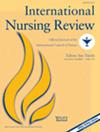Are We Stepping Back? Findings From an Italian Study on Post-Pandemic Changes in Nursing Education
Abstract
Aim
To describe (a) recommended changes implemented and their perceived effectiveness at the country level, (b) changes discontinued in the post-pandemic era with reasons, and (c) research priorities in nursing education for the next five years.
Background/Introduction
The COVID-19 pandemic has pushed several nursing education transformations. However, no studies have documented changes still prevalent in the post-pandemic era.
Design
A national cross-sectional study following the STROBE guidelines.
Methods
All Italian nursing programs (n = 241) were targeted. Eight major and 21 subrecommendations indicating changes expected were included in the online survey to measure their implementation, their perceived effectiveness and status at the time of the survey, discontinuation reasons, and the research priorities. Descriptive and content analyses were used.
Results
113 (45.5%) nursing programs participated reflecting the education received by >70% of Italian nursing students. All recommended changes have been implemented from 60.2% to 100% nursing programs, resulting in a perceived effectiveness from 4.29 (confidence interval [CI] 95%, 4.07–4.51) to 6.37 (CI 95%, 6.19–6.56) out of 7. A few recommendations were still applied at the time of the survey, while several were discontinued (from 4.8% to 61.9%) because, in order, of concern regarding their effectiveness, university/law dispositions, traditional methods reimplemented, technical/logistic difficulties and students’ requests. Digital solutions’ impact on nursing education was identified as a research priority.
Conclusion
After the multifaced changes triggered by the pandemic, the pace of transformation of nursing education seems to have been decelerated.
Implications for nursing
The potential regressive pattern that has emerged, wherein the previous model of nursing education is repristinated, calls for immediate action, which is also in line with the research priorities.

 求助内容:
求助内容: 应助结果提醒方式:
应助结果提醒方式:


